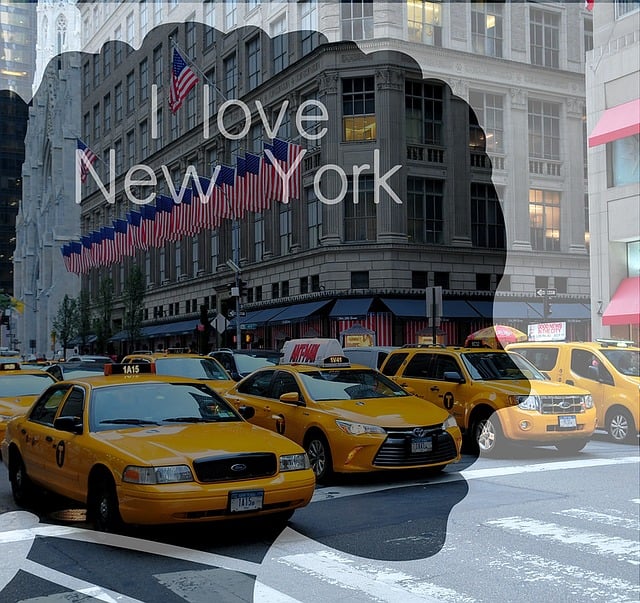There are few images as enduring and recognizable as that of a New York Yellow Cab. From a very young age, people from all around the world have that image deeply entrenched into their consciousness, as a result of the many pieces of New York-based media they had consumed.
A blog about taxis cannot pertain to be one without a mention of the New York Yellow Cab. This is why today we will tell you about the history of the inarguably most famous taxi in the world.
The Creation of the Yellow Cab
The history of the New York cab predates the existence of modern cars.
The first private taxi company to spring up in the Big Apple started operations in 1897. The Electric Carriage and Wagon Company had 12 electric hansom cabs that took passengers across the five boroughs. Only a few years later, the fleet numbered 1,000 cabs, though sadly, many of them were destroyed in a fire; that event, coupled with the financial crisis of 1907, bankrupted the company.
With the dissolution of the Electric Carriage and Wagon Company, New Yorkers were forced to go back to horse-drawn carriages. That was until businessman Harry N. Allen decided to start his own taxi company, named the New York Taxi Cab Company, after being charged an exorbitant price for a carriage ride.
In 1907, Allen imported 65 cars with gasoline engines from France which, importantly, had taximeters (that’s where the word taxi comes from) that track the mileage, so riders could not be tricked by advantageous drivers. Allen is an example of a disgruntled client who took matters into his own hands and accidentally created the modern taxi.
The French cars were originally red and green, but Allen repainted them all yellow, so they could be noticeable from greater distance (he must have known a thing or two about color theory). Similar businesses emerged in other American cities, most notably Chicago, which soon got its own fleet of recognizable yellow cabs.
Allen’s business became an overnight success and New Yorkers soon bid farewell to the horse-drawn carriage. Within a year, his 65 cars turned to a fleet of 700, and clients were happy about the service and the pricing.
In 1908, a notable competitor came on the scene when Albert Rockwell founded his own taxi company in Connecticut (though the cabs operated in New York). Rockwell argued that his taxis were the first NYC yellow cabs after his wife allegedly suggested painting the cars yellow for her favorite color. In 1912, Rockwell even changed the company’s name to the Yellow Taxicab Company.
The businessman was apparently so adamant about the fact that he was the one who invented the yellow taxi that he started long legal processes against multiple taxi operators, with one case even reaching the New York Supreme Court. The justices didn’t ban other operators from painting their cars yellow, though they conceded that Rockwell could stop them from associating with his brand.
Some believe Allen to be the creator of the New York City Yellow Cab, and others point to Rockwell, but whatever the truth is, the important thing to understand is that it led to a taxi revolution that captured not only the American imagination, but that of the whole world.
In the first few decades of gasoline-powered taxis in New York, each company had a car fleet in a distinctive which helped clients remember their brand.
There were red, green, and even purple cars (the latter famously making an appearance in the classic The Great Gatsby), which allowed riders to easily pick out their preferred operator. Still, it was yellow that came out victorious in the end.
The same was true for the car brand. Many companies, including Ford and General Motors, tried to make their mark and monopolize the taxi field, but it would be the Checker Cab Manufacturing Company, featuring the iconic checkered line, that became the most popular.
Later History of the Yellow Cab

Cabs were an instant success in New York which makes sense because nobody wants to drive in that traffic.
However, at some point, there were so many cars and drivers that they exceeded the market’s needs. In order to remedy that, New York mayor Fiorello H. La Guardia (yes, the guy who has an airport named after him) created the medallion system of licensing in 1936 (which still exists today) and limited the number of licenses.
Still, some companies tried to evade the law and offer rides in unlicensed cars. This is why in 1967, a new law was passed that mandated all medallion taxis to be painted yellow to stop the confusion and to curb illegal taxi companies.
A few years later, in 1971, the New York City Taxi and Limousine Commission (TLC) was founded as a subsidiary of the New York City government. TLC was given an exclusive right to license and regulate medallion taxis, a responsibility it holds today.
Conclusion
This is the brief history of the most famous taxi in the world – the New York Yellow Cab. There have been many more interesting stories associated with the brand over the years, but we’d need months to retell them.
If you want to learn more about the NYC Yellow Cab, we recommend the books The Taxicab: An Urban Transportation Survivor by Robert E. Samuels and Taxi!: A Social History of the New York City Cabdriver by Graham Russell Gao Hodges.
